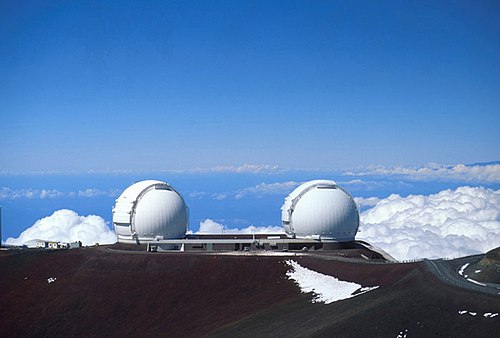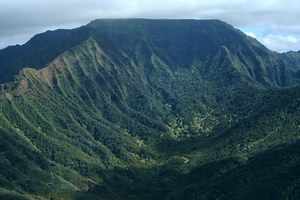
The Hawaiian Islands has 13 major mountain peaks [a] with at least 500 meters (1640 feet) of topographic prominence.
Contents
The summit of a mountain or hill may be measured in three principal ways:
- The topographic elevation of a summit measures the height of the summit above a geodetic sea level. [1] The first table below ranks the 13 major summits of Hawaiʻi by topographic elevation.
- The topographic prominence of a summit is a measure of how high the summit rises above its surroundings. [2] [1] The second table below ranks the 13 major summits of Hawaiʻi by topographic prominence.
- The topographic isolation (or radius of dominance) of a summit measures how far the summit lies from its nearest point of equal elevation. [3] The third table below ranks the 13 major summits of Hawaiʻi by topographic isolation.





